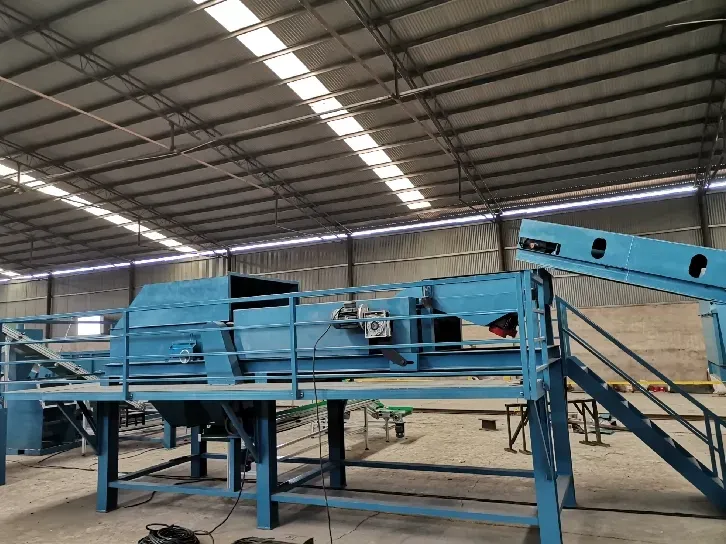

nóv . 10, 2024 11:28 Back to list
Eddy Current Non-Ferrous Metal Separator An Overview
In recent years, recycling and waste management have become increasingly critical due to the growing concerns about environmental preservation and resource conservation. One of the most vital components of this industry is the efficient separation of non-ferrous metals from waste streams. The Eddy Current Non-Ferrous Metal Separator (ECMS) has emerged as one of the most effective technologies for achieving this goal.
How Eddy Current Separators Work
The eddy current separator operates on the principle of electromagnetic induction. When non-ferrous metals, such as aluminum, copper, and brass, pass through a magnetic field generated by powerful magnets, they generate eddy currents. These eddy currents produce their magnetic fields that interact with the magnetic field of the separator. As a result, non-ferrous metals are repelled from the conveyor, while other materials, such as ferrous metals and non-metals, continue along the separation process.
The design of an eddy current separator typically consists of a conveyor belt, a magnetic rotor, and a housing. The conveyor belt transports the mixed material towards the magnetic rotor rotating at high speeds. The rotor’s design and specific configuration can significantly impact the separation efficiency, allowing operators to customize the equipment based on the type of materials being processed.
Advantages of Eddy Current Separators
Eddy current separators offer several advantages that make them a preferred choice in the recycling industry
1. High Efficiency ECMS can effectively separate non-ferrous metals even from highly contaminated materials. Their ability to handle fine particles and large volumes ensures that maximum recovery rates are achieved.
2. Eco-Friendly Solution By facilitating the recycling of metals, eddy current separators contribute significantly to sustainability. They reduce the need for mining and processing new metals, helping conserve natural resources and lower greenhouse gas emissions.
3. Cost-Effectiveness Investing in eddy current technology can lead to considerable cost savings in the long run. Recycling non-ferrous metals reduces operational costs associated with waste disposal and raw material procurement.

4. Minimal Maintenance Modern eddy current separators are designed for low maintenance, reducing downtime and associated costs. Their robust design also leads to an extended lifespan, making them a viable long-term investment.
Applications of Eddy Current Separators
Eddy current separators are widely utilized across various industries due to their versatility. Key applications include
- Municipal Solid Waste Recycling ECMS effectively separates aluminum cans, copper wire, and other non-ferrous metals from general waste, enabling higher recycling rates.
- Construction and Demolition Waste In the construction sector, separating non-ferrous metals from debris is crucial for recycling materials. Eddy current separators can recover metals from mixed aggregates and concrete.
- Automotive Recycling The automotive industry generates significant metal waste that can be recycled. Eddy current separators help recover valuable non-ferrous metals from scrap vehicles, contributing to a circular economy.
- Electronics Recycling With the rise of electronic waste, eddy current technology plays a pivotal role in recovering metals from obsolete electronics, ensuring that valuable resources are not lost.
Conclusion
The Eddy Current Non-Ferrous Metal Separator represents a significant advancement in recycling technology. Its ability to efficiently separate non-ferrous metals from waste streams not only supports environmental sustainability but also enhances the profitability of recycling operations. As industries continue to seek innovative solutions for waste management, ECMS will undoubtedly play a crucial role in the future of recycling and resource recovery. By investing in such technologies, businesses can contribute to a greener planet while optimizing their operational efficiencies and minimizing environmental impact.
Latest news
Troubleshooting Common Eddy Separator Problems
NewsJul.04,2025
The Role of Metal Recycling Plants in Circular Economy
NewsJul.04,2025
The Impact of Recycling Line Pickers on Waste Management Costs
NewsJul.04,2025
Safety Features Every Metal Shredder Should Have
NewsJul.04,2025
How Industrial Shredders Improve Waste Management Systems
NewsJul.04,2025
How Cable Granulators Contribute to Sustainable Recycling
NewsJul.04,2025